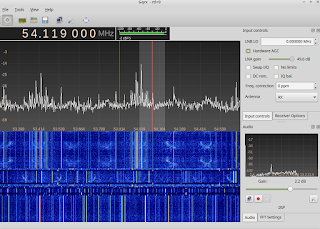RECEIVING SSTV FROM ISS ! Steps involved in decoding when using MMSSTV ......
A very interesting mode in ham radio is SSTV and more interesting is the SSTV from ISS - the International Space Station ! Receiving the images from ISS is pretty simple . However many hams have some problems recording SSTV audio and decoding them using MMSSTV . My ham friends like OM Ramesh VU3RGB , OM Sulaiman VU3SMQ and OM Dhanesh VU3DHN encouraged me to make a blog post describing the various steps involved .
1) The first step is simple . Just tune to 145.800MHz in your VHF receiver and record the audio using some device like your smartphone,holding it near to your rig .It is better to use SDRs like RTLSDR to record audio using a computer. However my shack PC is QRT now , so ,I can't use SDR . Anyway be sure to use some excellent satellite tracking software like the Hamsatdroid (Android) or Orbitron (Windows) to guide you in tracking the ISS .
2) After recording , copy the recorded .amr file to your PC from phone . Use some tool to convert the amr to wav file . One excellent online conversion tool is http://media.io/ .
3) Now download the .wav file and import it into audacity . Change the project rate to 11025 Hz and ensure that the audio is mono . Slice off the noise part and silence from the audio .
4) Now export it to another wav file . After this rename the new audio file with .mmv extension instead of .wav ( You may have to change folder settings for this )
5) Open MMSSTV software and set the mode to auto . Import the newly created .mmv file into it .
6) You will be able to view the image being decoded and shown ! Bravo ! You now have the image .Export it .
I have deliberately skipped certain steps which are obvious :)
Some of the pics that I obtained are given below .
 |
| Dec 20 , 2014 |
 |
| Feb 1 , 2015 , 19.05 IST |
 |
| April 12 , 2015 |
 |
| April 12 , 2015 , Partial image |


Comments
Post a Comment